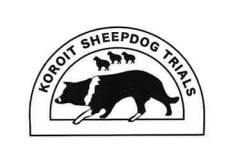What is botulism?
Botulism is caused by the bacteria Clostridium botulinum. It is present in the environment in the form of spores. In anaerobic conditions (no oxygen), these spores germinate into living bacteria that produce a neurotoxin. When cows ingest this neurotoxin* it travels to nerve endings and blocks the release of the neurotransmitter Acetylcholine. This results in flaccid paralysis of muscles.
* NB. This is the same neurotoxin that is used in Botox injections to eliminate wrinkles
How bad can botulism be?
The clinical signs of botulism are progressive paralysis and recumbency, with death from respiratory failure. With high levels of toxin, signs are seen within 12‒24 hours, with low doses 7‒20 days. Treatment of affected animals is rarely successful.
Most cases of botulism are due to contamination of cows’ feed or water with rotting vegetable or animal matter. If many animals are exposed to the toxin, the results can be catastrophic, with tens or hundreds of animals affected. Whole dairy herds have been lost to botulism.
In what scenarios is botulism seen?
The most common scenarios for milking herds include:
- Dead animals (e.g. possums, mice, snakes) in grain, hay, or silage. Pitted silage is of highest risk as the toxin can spread through the stack
- Rotting, high moisture feeds such brewer’s grains
- Poorly produced silage that rots rather than ferments (the acidic environment of good silage kills botulism)
- Mixed rations are high risk as toxin can be distributed throughout the whole mix as opposed to being contained in isolated areas of feed
These photos show the location of a dead cat in a wheat silo.
17 animals died after being fed contaminated wheat flour.
Other scenarios include:
- Using poultry litter as a fertilizer
- Accessible carcass disposal areas on farm
- Phosphorous deficiency (which is what is common in
beef cattle in Northern Australia). Animals chew bones to fulfil their need for phosphorous and ingest scraps of attached meat (a gram of dried flesh may contain enough botulinum toxin to kill a cow)
How can botulism be prevented?
Management practices during silage making, and management of mixed rations are important:
- No dead animals baled up or harvested with silage or hay
- Minimize soil and manure contamination of hays, silages etc.
- Make good silage! (good compaction and sealing to ensure that fermentation takes place)
- Vermin control
- Fence off all carcass disposal areas and not site these areas near watercourses or
high run-off areas - Remove dead animals and old carcasses (including vermin) from grazing paddocks promptly
- If dead animal/s are found in silage or hay, cease feeding it immediately
- Use bunkered wet feeds (e.g. Brewer’s grain) within 7‒10 days
- Clean bunkers between each load and remove spoilt residues
What about vaccination?
While the cost of vaccination is moderate and the risk of a botulism outbreak is low, the effect of the outbreak can be financially and emotionally devastating.
Type C and D botulism vaccine highly protective against the two most common strains but doesn’t protect against less common A and B. Single dose vaccines are possible in endemic areas.






























